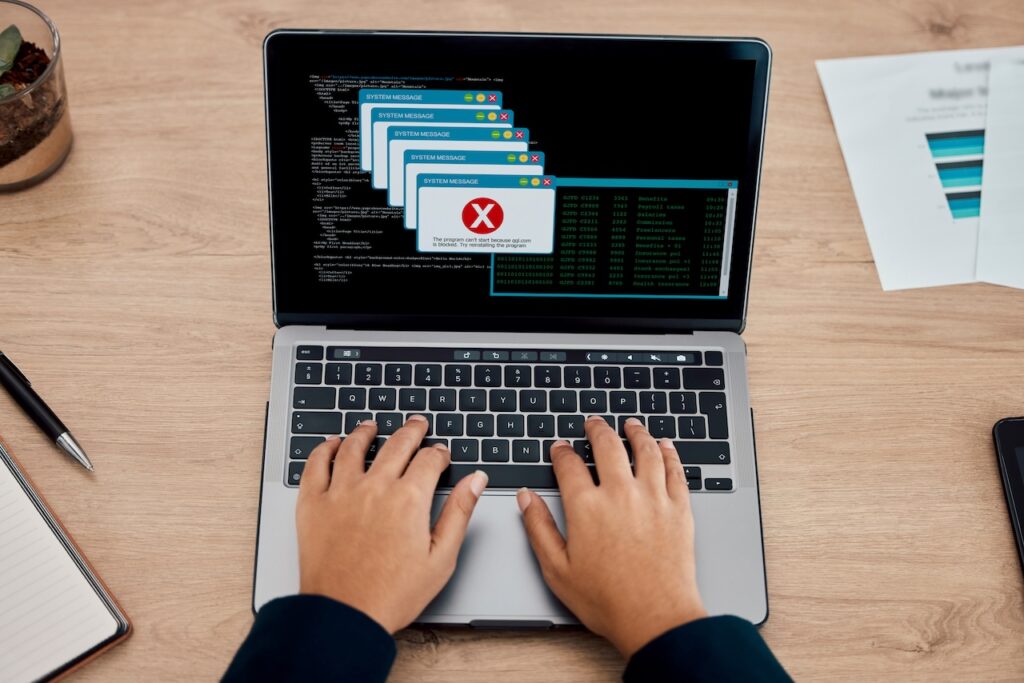It’s easy to think you’d never fall for a scam… until that convincing email from your boss asks you to fill out a seemingly innocent form. Phishing scams are becoming more sophisticated and harder to spot, making it crucial for everyone to stay vigilant and protect their personal information. To make it easier, we’ve gathered the most common signs of a phishing email to help you stay safe online.
What Exactly Is Phishing?
Phishing is a cyberattack where malicious actors try to obtain sensitive information by posing as a legitimate person or company. The most common tactics include:
- Creating a sense of urgency or fear to gain login information
- Asking for personal information like passwords, credit card numbers, or social security numbers through links or attachments
- Including links or attachments that contain malware
Sometimes, phishing emails can be so convincing that they look exactly like the source they’re acting as, such as your bank or a well-known company. This scam is more targeted and aims to gather specific information, so watch for any signs of a phishing email.
What Happens If I Click Something Bad?
Clicking on a malicious link or attachment can have severe consequences. Think identity theft, financial loss, or even a compromise of your entire computer system. Malware is often hidden in links or attachments, and it can wreak havoc on your device. Be cautious when opening emails with suspicious content from unknown sources.
9 Common Signs of a Phishing Email
The first step to protecting yourself from phishing scams is knowing what to look for. These are some of the warning signs that an email may not be legitimate:
1. Unusual Sender Address
The easiest way to spot a phishing email is by checking the sender’s email address. If it’s any different than the usual domain or has random numbers and letters, it’s definitely a red flag.
2. Generic Greeting/Opening Line
Phishing emails are usually sent in mass, so they often start with a generic greeting like “Dear Customer” or “Hello.” If the sender doesn’t use your name, it’s likely not a legitimate email.
3. Urgency or Fear Tactics
Phishing emails often try to create a sense of urgency or fear to make you act quickly without thinking. If the email contains a scary warning that your account will be closed or compromised, it’s best to double-check with the company directly.
4. Too Good To Be True Offers
Another tactic used by scammers is to entice victims with irresistible offers or promotions. If it sounds too good to be true, it probably is.
5. Poor Grammar and Spelling
Pay attention to spelling and grammar mistakes in the email. Legitimate companies usually have professional writers proofread their content, so any errors could be a sign of a phishing email.
6. Request for Personal Information
Legitimate companies will never ask for sensitive information through email, such as passwords or credit card numbers. If a company asks you to provide this type of information, it’s almost always a sign of a phishing email.
7. Suspicious Links or Attachments
If an email contains links or attachments that you weren’t expecting, don’t click on them! This is one of the most common ways for scammers to infect your device with malware.
8. Unexpected Requests for Action
If you receive an email from someone you know but they’re asking for something out of the ordinary, it’s best to verify with them directly before taking any action. Their account may have been compromised and used to send phishing emails.
9. Generic Signature
Legitimate companies usually have personalized signatures with the sender’s name and contact information. If the email has a generic signature (or no signature at all), it’s another red flag.
How to Protect Against Email Scams
Now that you know the warning signs of a phishing email, here are some tips to help protect yourself:
- Don’t click on links or attachments from unknown sources.
- Keep your anti-virus and anti-malware software up-to-date.
- Use email filtering and security software.
- Encourage skepticism and verify with the sender if an email seems suspicious.
- Enable multi-factor authentication (MFA) on all accounts.
- Educate yourself and others about phishing scams to stay informed and alert.
- Report suspicious emails to IT or security teams immediately.
Ask RedNight Consulting for Expert Protection
Even if you know all the signs of a phishing email, mistakes still happen. That’s why it’s crucial to have a strong cybersecurity strategy in place. At RedNight Consulting, we offer security solutions to keep your personal and business information safe from cyber threats. Contact us today to learn more and protect your company!


